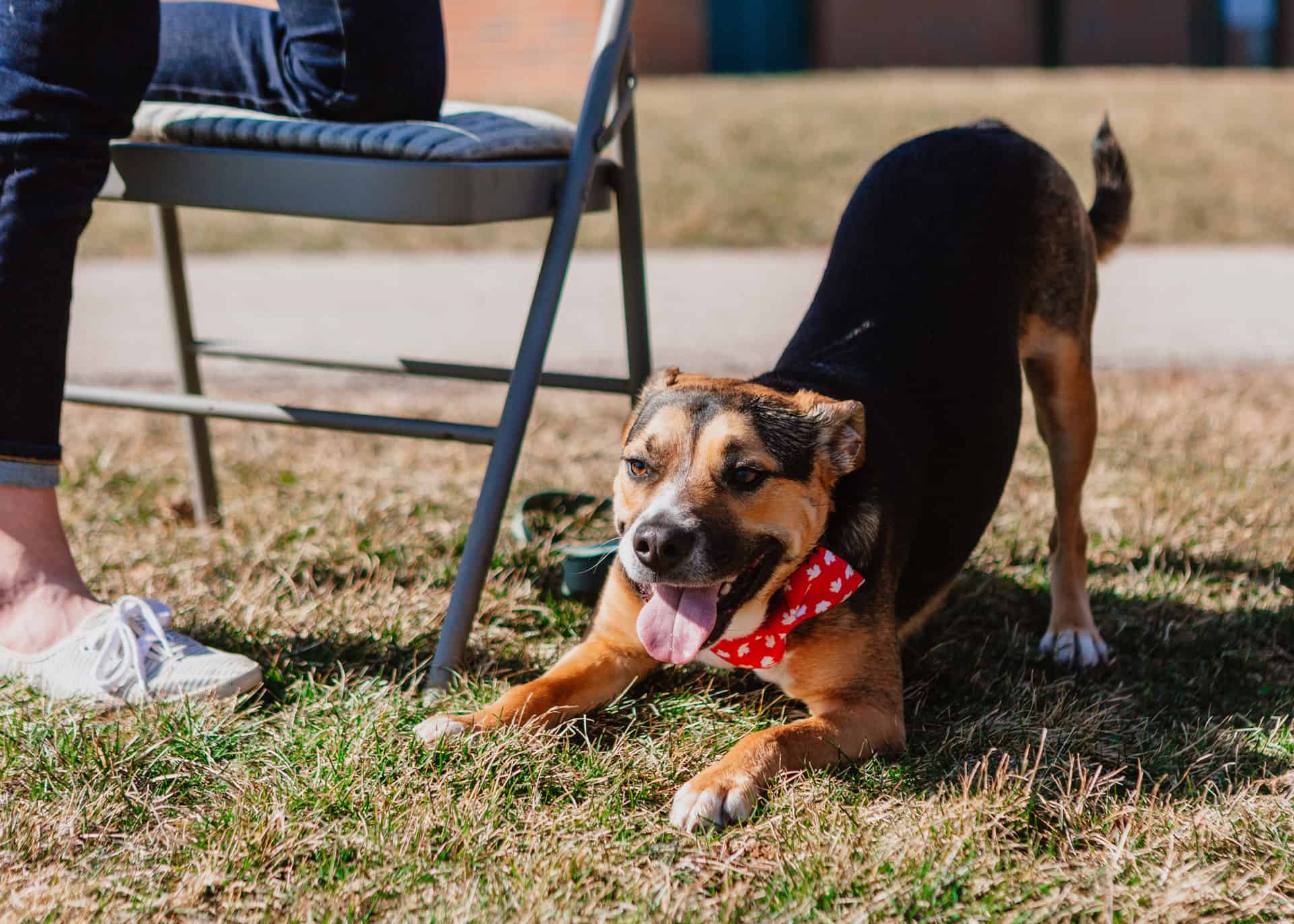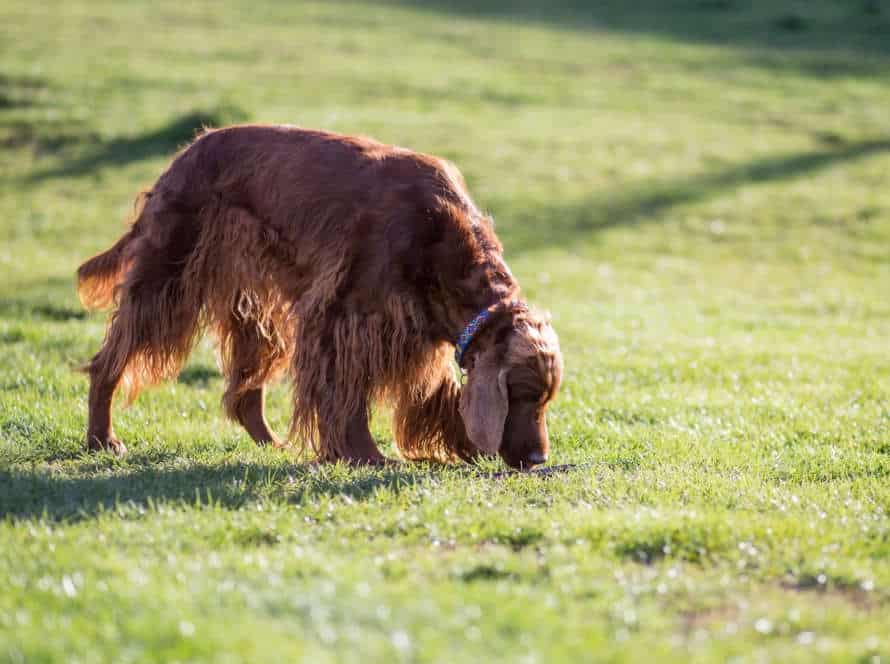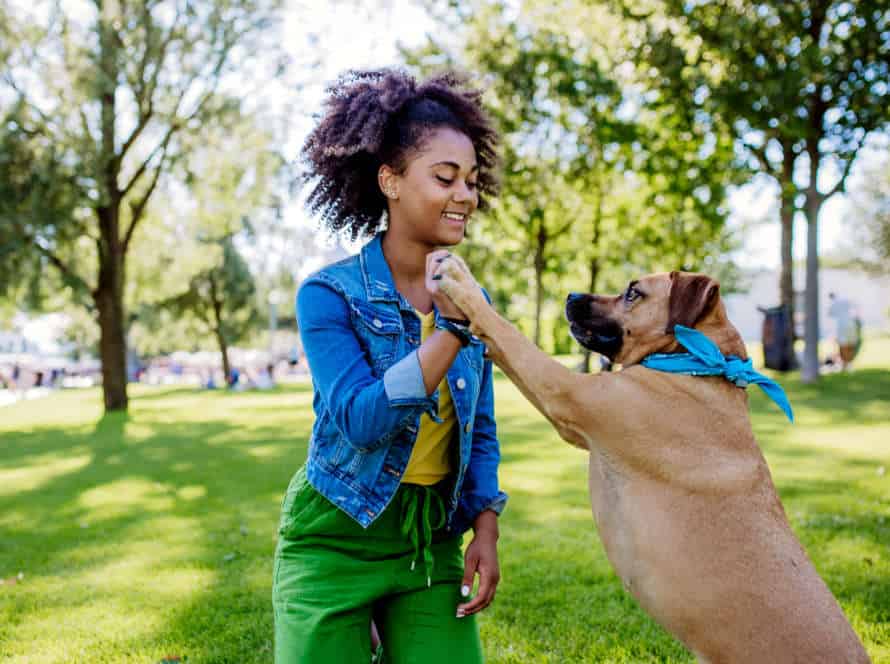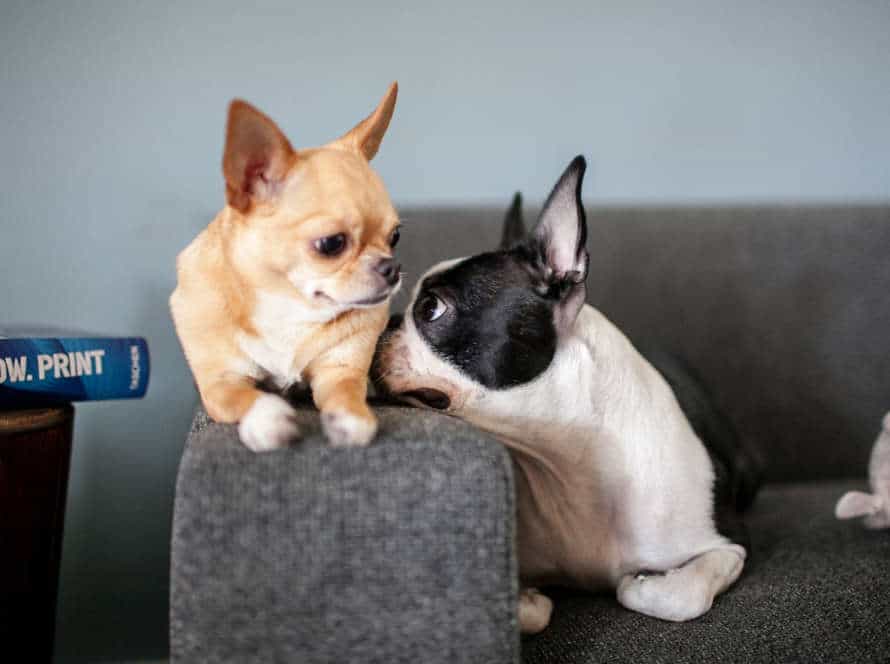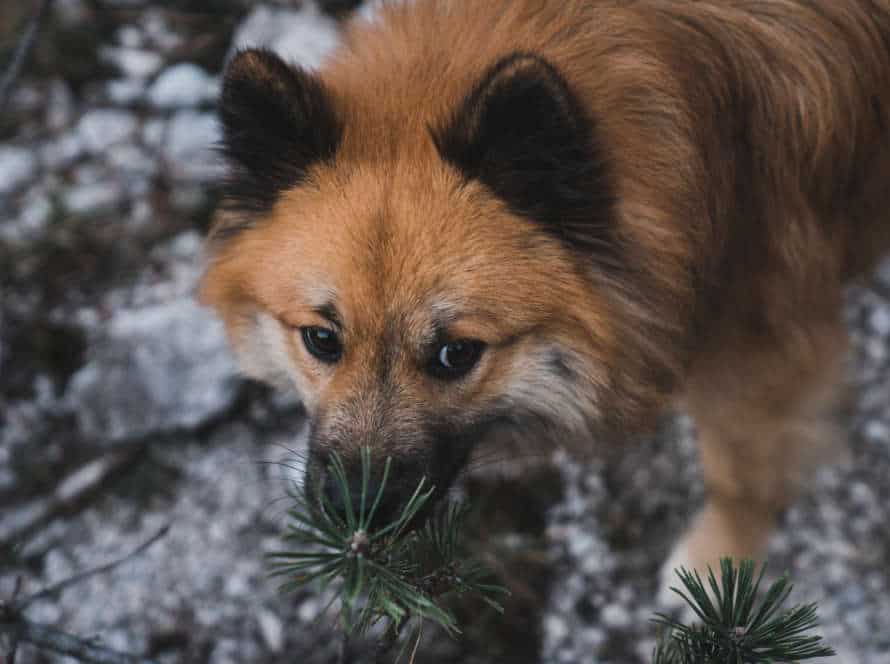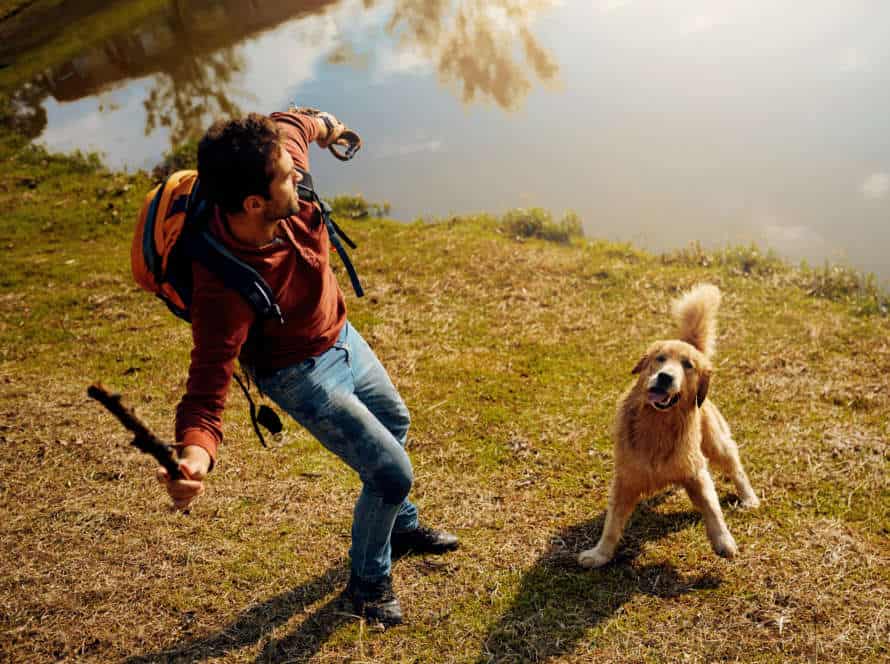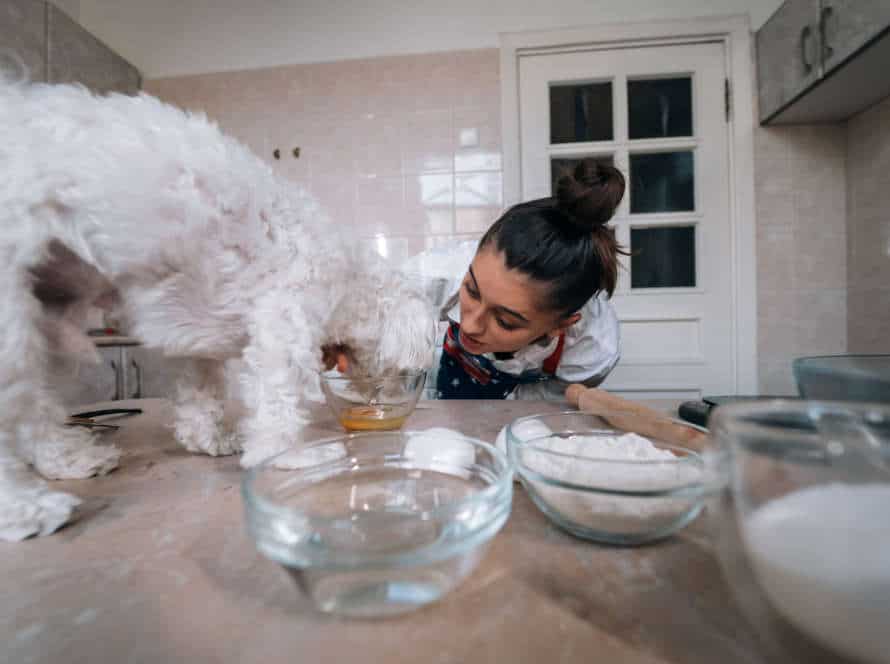The Art of Bowing: Teach Your Dog to Take a Bow
Want to have a blast teaching your pup a cool trick? Plus, have an awesome way to bond with your pooch? Then, let’s learn how to train your pup to take a bow!
Steps:
- Get your pup in a standing position. Then, use a treat to lure them into a downward position, with their front legs extended in front of them.
- Now, say “Take a Bow” and give your pup a treat.
- Do this several times. Gradually, you can remove the treat and just use the verbal command.
- When your pup is comfortable taking a bow, give a verbal cue and a hand gesture to make it cooler.
- Always remember to be patient and reward your pup with treats and praise.
Understanding the Bowing Behavior in Dogs
Bowing is a very common behavior in many dog breeds. It’s often done as a sign of submissiveness or as a friendly greeting. Teaching your dog to bow is doable with patience and understanding. To fully comprehend the meaning behind a dog’s bowing, it’s important to consider the context. Let’s look closer at what bowing in dogs could mean.
Why do dogs bow?
Dogs bow for communication, fun, and stretching. This is their way of telling us they feel at ease and inviting us to play. There’s more to bowing than meets the eye:
- Playful behavior – Dogs bow as a sign they want to have fun and be active.
- Stretching – It helps them stretch their back and neck muscles.
- Communication – Dogs use this posturing to talk to other canines, with body language and vocalizations.
Teaching your pup to bow? Here’s what to do:
- Get your dog in a standing position, using treats as an incentive.
- Move the treat away from their face, so they lower their head to reach it.
- When their elbows touch the ground, reward them with the treat and say “bow” or “take a bow.”
- Repeat the process and make the distance between the treat and the pup bigger each time.
- Reinforce with praise. Practice in different places.
The Different Types of Dog Bows
Dog bows come in many types and styles. Here are the most popular:
- Topknot bows: Tiny bows attached to the top of the head, used to keep fur from eyes.
- Show bows: Larger, come in many shapes. Used in dog shows to make dog look better.
- Basic bows: Simple bows made of ribbon, attach to collar as accessory.
- Awareness bows: Promote different causes and events, like breast cancer or animal welfare.
Dog bowing is when the front body lowers while hindquarters stay up. Playfulness, submission or stretching can all be indicated. Teach your pup to bow on command for a stronger bond. Note: Make sure the bowing isn’t a sign of fear or hurt, and get help if needed.
Body Language Clues to Look for When Your dog bows
Do you own a pup? Ever questioned what they’re trying to tell you when they bow? Bowing is a normal behaviour for dogs, and can mean different things depending on the circumstances. Here are some hints to help you understand their body language when they bow:
- Check the position of their tail – it can show their level of excitement or interest.
- If their body posture is loose and wiggly, they may be feeling playful and wanting to socialize.
- Dilated pupils may mean they are aroused or excited.
- Rigid muscles, stiff legs or raised hackles may signal aggression, defence or fear.
If you want to teach your dog to take a bow, it can be a fun way to bond with them. With treats, patient instructions, reinforcing the behaviour and positive affirmations, your pup can learn the art of bowing.
Steps to Teach Your Dog to Take a Bow
Teach your pup to take a bow! It’s an adorable trick for them to learn. Simple to teach and sure to amaze family and friends!
To start, build a positive relationship with your dog. Reinforce desired behavior for the best results. Let’s get started on teaching your pup bow-tastic tricks!
Training Pre-requisites
Before training your pup to take a bow, there are certain needs to meet. To make sure your furry friend is ready to learn:
- Obedience commands: Teach them the basics like ‘sit’, ‘stay’, and ‘come’.
- Positive reinforcement: Use treats and praise as a reward.
- Patience: Training takes time, don’t rush it.
Once you’ve got these down, start teaching them how to take a bow with simple steps!
Lure and Reward Method
The Lure and Reward Method is a popular way to teach your pup to take a bow. Here are the steps:
- Hold a treat in front of their nose and slowly lower it. As they follow it, their front legs will lower and their hind legs will stay standing.
- Give them the treat when they’re in the bow position.
- Repeat this a few times until they get comfortable with the bowing position.
- Gradually phase out the treats and reward them with verbal praise or a pat on the head.
- Keep training sessions short and positive. Always end on a high note.
Capturing Bowing Behavior
Teach your pup to take a bow! It’s an entertaining and impressive trick. You’ll need patience and consistency. Here’s how:
- Start with your dog in a standing position.
- Hold a treat close to their nose, then slowly lower it to the ground.
- As they follow the treat, their front legs should extend forward.
- When their elbows touch the ground, say “take a bow” and give the treat.
- Practice this until they do it on command.
- No more treat? Use a verbal cue like “take a bow” instead.
- Once they’re comfortable with the trick, add your own flair. Have them hold the bow for longer, or pair it with other tricks.
Remember: always use positive reinforcement and avoid punishment.
Troubleshooting Bowing Training
Train your pup to bow? Fun! Yet, when teaching tricks, issues can pop up. Don’t worry! Here are tips to help! Let’s look at them.
What to do if Your Dog Refuses to Bow
Does your pup not want to bow while in training? No worries – here are some tips to help you out.
- Check Physical Health: Ensure your dog doesn’t have any physical issues preventing them from performing the bow.
- Use Positive Reinforcement: Use verbal cues and rewards to motivate and reward good behaviour.
- Step by Step: Start with simple commands, then work your way up to more complicated ones.
- Increase Temptation: Use treats or toys to entice your pup to bow.
Patience and persistence are key when teaching a dog to bow. Don’t give up if it doesn’t work the first time. Keep practising and make it enjoyable for your fur baby. With time, they’ll learn the trick! Pro Tip: Consistency is key for success in dog training.
What to do if Your Dog Reverts to Previous Behaviors
If your pup has gone back to old habits, it’s important to use a few tips to get back on track. Here are some ways to fix bow training and teach your dog the bow:
- Reinforce Basic Commands – Help your dog understand who is in charge by reinforcing sit, stay, or come.
- Be Steady – Make sure your cues and rewards or corrections are the same each time when training. This stops any misunderstandings, which cause your dog to go back to past behaviours.
- Go Slow – Don’t go too fast with training. Wait until your dog has completely mastered the bow, before moving onto the next level.
- If all else fails, hire a pro. A professional dog trainer can assist in troubleshooting the process and finding any behaviours that need to be fixed.
Pro Tip: Patience and consistency are the keys for a successful training journey. Don’t give up on your pup and always use positive reinforcement in training.
How to Refine your Dog’s Bowing Behavior
Teaching your dog to bow can be a fun trick. But, if your pup is having trouble, these tips may help!
- Put a treat under their nose and slowly guide it down to their front paws. This encourages them to bow for the reward.
- Make sure your pup is feeling good and not in any pain.
- Start with small steps and give treats for each success.
- Have patience and stay consistent with positive reinforcement. This will help refine your pup’s bowing behavior.
Advanced Bowing Training Techniques
Train your pup to bow! This fun, advanced trick will take patience and consistency to learn. Let’s explore some advanced methods to help you and your pup master this cool trick.
Bowing on Cue
Train your pup to bow on command! It’s a bit tricky, so you’ll need persistence and patience.
- Begin by getting your pup in the down position.
- Hold a treat in front of their nose, and lower it slowly to the ground.
- As they follow the treat, move it forward to stretch out their front legs and lower their head.
- Say “bow” as they reach the end position.
- Repeat the process and reward them with treats and praise.
- Once your dog has got it, start to slowly reduce the use of treats.
Remember to keep training sessions short and end on a positive note.
Bowing in a Sequence
Want to improve your violin skills? Mastering bowing sequences is essential! Here’s how:
- Hold the bow with your right hand and place it on the strings.
- Grip the violin neck with your left hand.
- Gently bow down to make a sound, repeating the process.
- Start with a single bow up and down.
- Then try two bows up and down.
- Keep adding more bows as you become more confident.
- Keep your posture upright as you practice.
- Keep practicing bowing sequences regularly and you’ll soon be a pro!
Remember – practice slowly and deliberately for best results.
Combining Bowing with Other Behaviors
Combine bowing with other behaviors to upgrade your pup’s training and add complexity to their bow.
Try these advanced techniques:
- Give a verbal cue like “Take a Bow” or “Curtsy” when they bow.
- Use a hand signal or prop, like a hoop or a stick, to guide them into bowing.
- Train them to stay there for a while with a cue.
- Have them bow while walking or running; this takes coordination and balance.
Be patient and consistent in your training, and reward your pup when they’ve done well. With practice, they’ll master the art of bowing and wow everybody!
Practical Benefits of Teaching Your Dog to Bow
Did you know? Teaching your pup to take a bow offers more than just a fun trick and bonding experience. Show off your dog’s skills and gain practical benefits too! We’ll explore how this can help in everyday life.
Bonding and Connection
Teaching your pup to bow is a great way to build a strong relationship with your furry friend. Plus, it provides amazing benefits for both the pet and the owner!
Training your pup to bow gives it trust and respect in you. This tightens the bond and helps create a clear connection. Moreover, teaching your pup to bow is a wonderful way to keep him fit and healthy. The gesture helps stretch his front leg muscles, preventing injuries or joint stiffness. Finally, teaching your pup to bow is fun and entertaining. Use it to show off to your family and friends at social events or training sessions.
Pro tip: Be patient when teaching and use rewards like treats or praises to encourage good behavior.
Mental and Physical Stimulation
Teaching your pup to bow is not only fun for them, but a great way to stimulate them mentally and physically. This action works their muscles and helps strengthen their core. Plus, there are practical benefits too!
- Flexibility and mobility improve when they do the bow – it requires them to stretch and use their muscles.
- Mental sharpness is also improved as they learn a new skill and respond to commands.
- The bow also helps them relax and reduce stress, as it puts them in a submissive position.
In short, teaching your pup to bow is a great way to keep them fit, sharp and relaxed!
Entertainment and Showmanship
Teaching your pup to bow is a great trick! It’s not just fun, but also beneficial for their physical and mental health. Plus, it adds extra entertainment and showmanship to their performances. Let’s look at the practical benefits:
- Stretching: Bowing helps them stretch their back, legs, and neck, promoting good flexibility and overall physical health.
- Mental Stimulation: Learning new tricks like bowing keeps them mentally stimulated, preventing boredom and destructive behavior.
- Bonding: Training your dog to perform tricks, including bowing, strengthens the bond between you two.
- Showmanship: Incorporating a bow into their performances can add an extra wow factor and impress your audience.
Pro tip: Use treats and positive reinforcement to keep them motivated and make the training process enjoyable for everyone.
Frequently Asked Questions
1. How do I train my dog to take a bow?
Start by getting your dog in a standing position, then lure them forward with a treat. As they follow the treat with their nose, lower it to the ground, encouraging your dog to lower their front legs into a bow. Reward them when they successfully complete the motion.
2. What treats should I use to train my dog to bow?
Use high-value treats like chicken, cheese, or hot dogs to motivate your dog during training sessions. Treats that have a strong smell or taste will be more enticing and help keep your dog focused on the task at hand.
3. How long does it take to teach a dog to bow?
The amount of time it takes to teach your dog to bow is dependent on a variety of factors, including your dog’s age, personality, and previous training. With consistent practice and patience, most dogs can learn to bow within a few sessions.
4. Can all dogs learn to bow?
Yes, most dogs can learn to take a bow with proper training and consistency. Breeds with long backs, such as Dachshunds or Basset Hounds, may have difficulty with the motion, so adjust the movement to accommodate their unique physical characteristics.
5. Should I use a clicker when training my dog to bow?
Clicker training can be a useful tool when teaching your dog to take a bow. The clicker marks the precise moment your dog performs the correct behavior, making it easier for them to understand what you’re asking of them.
6. What should I do if my dog doesn’t want to bow?
If your dog seems hesitant or uninterested in learning to bow, try breaking the motion down into smaller steps and rewarding your dog for each successful attempt. Be patient and consistent, and don’t force your dog to perform if they seem uncomfortable or stressed.

